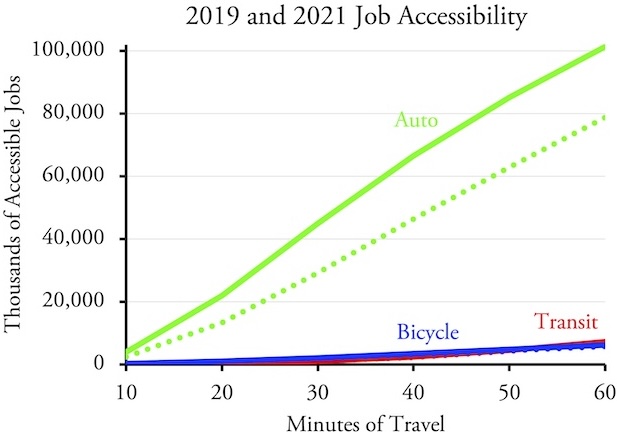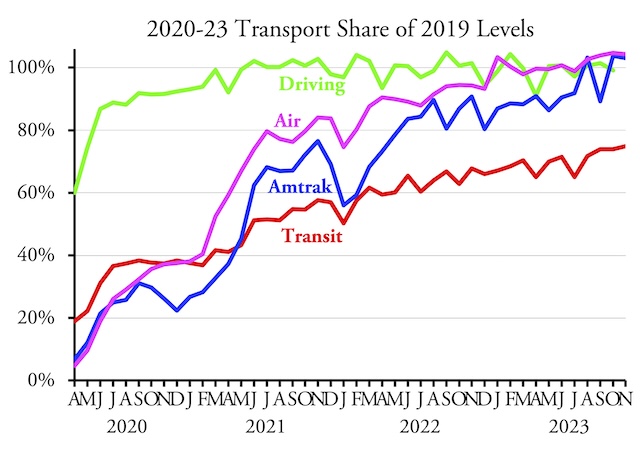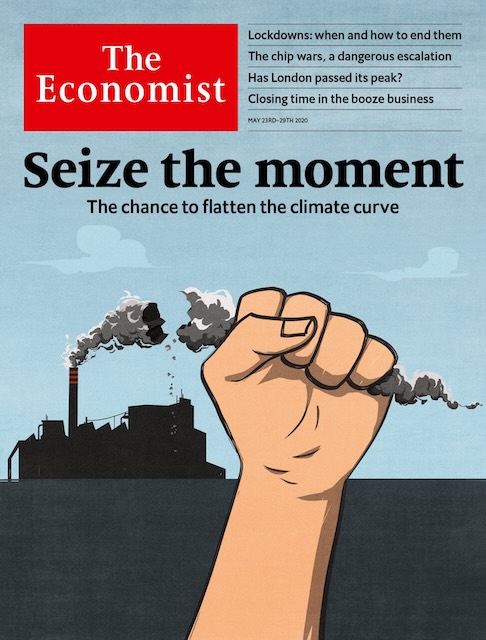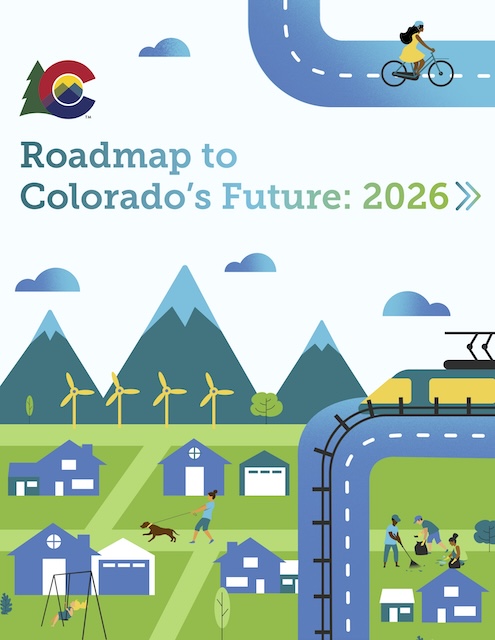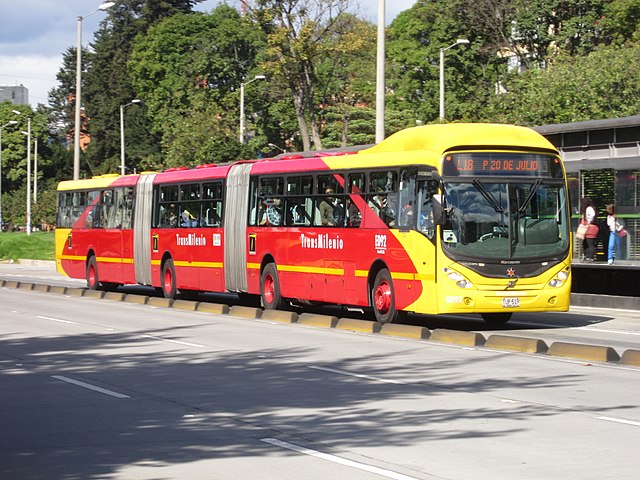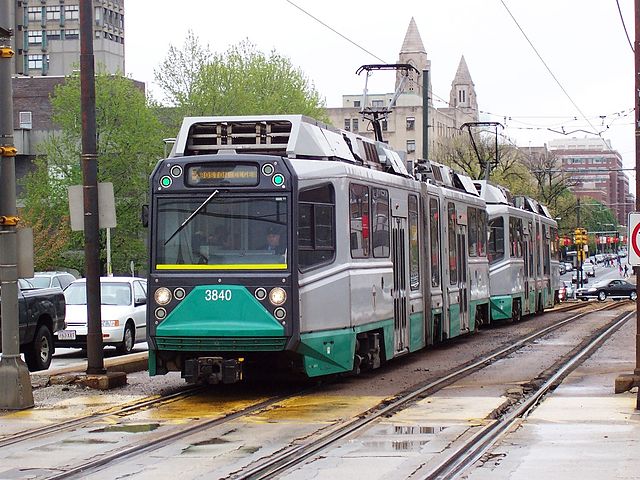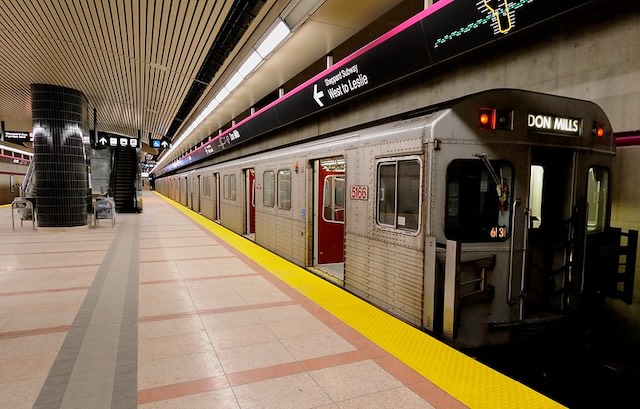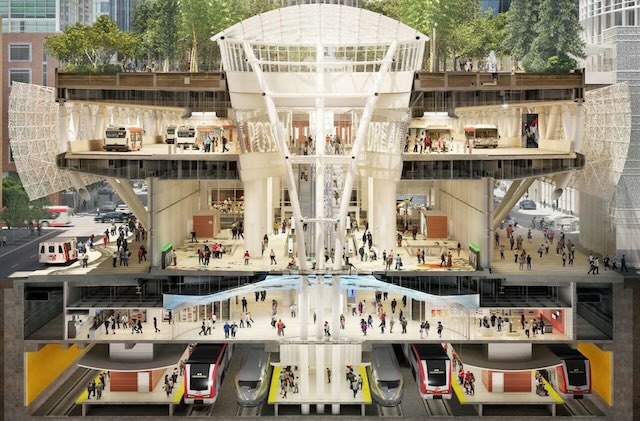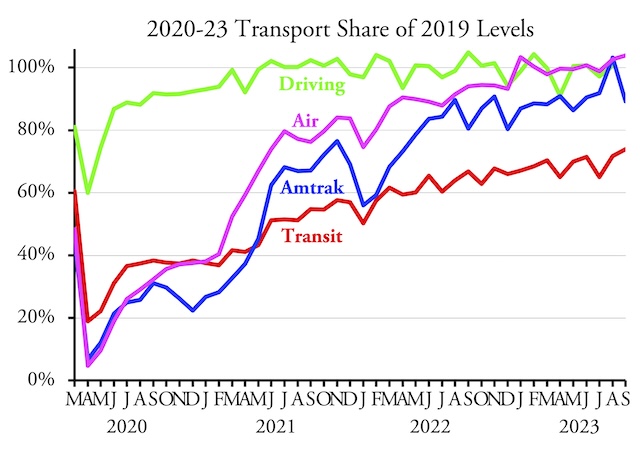Data published by the University of Minnesota Accessibility Observatory a few months ago reveals some of the benefits of congestion relief that resulted from the COVID pandemic. I’ve used 2019 data in the past to show that residents of U.S. urban areas can reach far more jobs in a 20-minute auto drive than a 60-minute transit trip. The latest data for 2021 reveal that the number of jobs reachable by transit or bicycle was about 9 percent greater in 2021 than 2019, but the number reachable by a 20-minute auto drive was 66 percent greater.
On average, over 50 urban areas and for trips of 10 to 60 minutes, auto users were able to reach 48 percent more jobs in 2021 than in 2019. Solid lines show 2021 and dotted lines show 2019.
These numbers are the average of the nation’s 50 largest urban areas, but for some the increased access caused by less traffic was much greater. In a 20-minute auto drive, residents of Atlanta, Boston, Los Angeles, San Francisco, San Jose, and Washington could reach more than twice as many jobs in 2021 than in 2019. Of course, jobs are only one possible set of destinations that became more accessible; other social and economic opportunities also became equally more accessible. Continue reading

